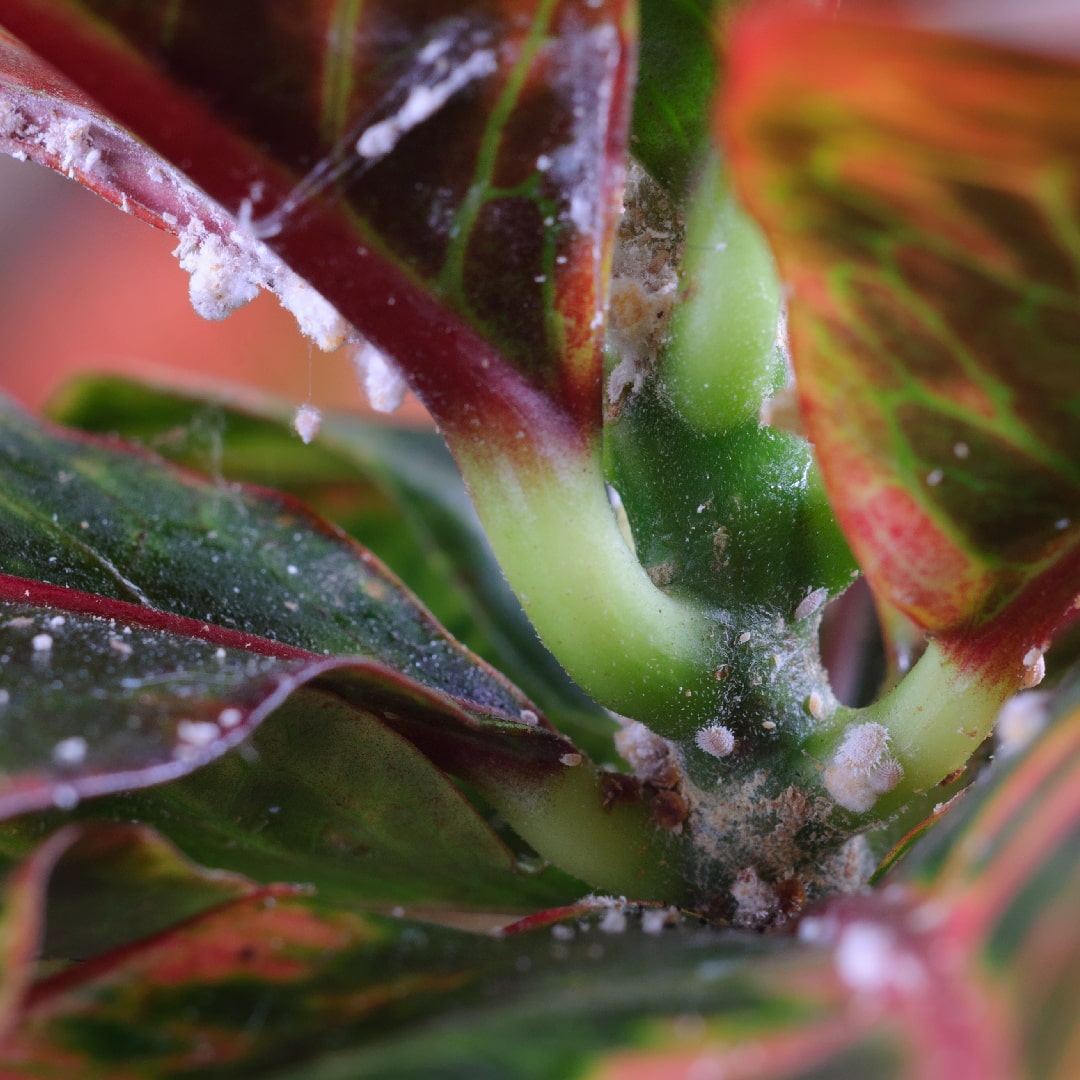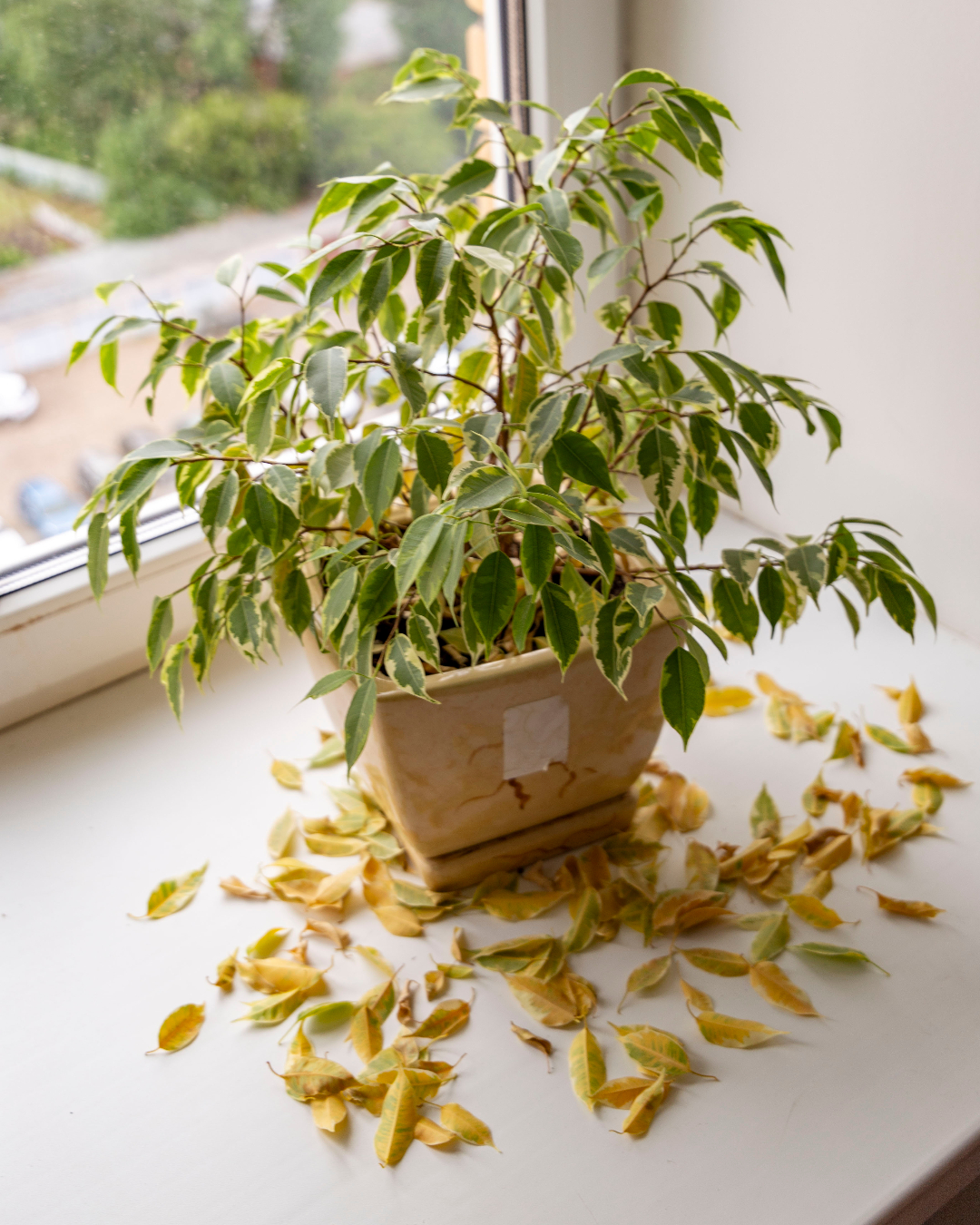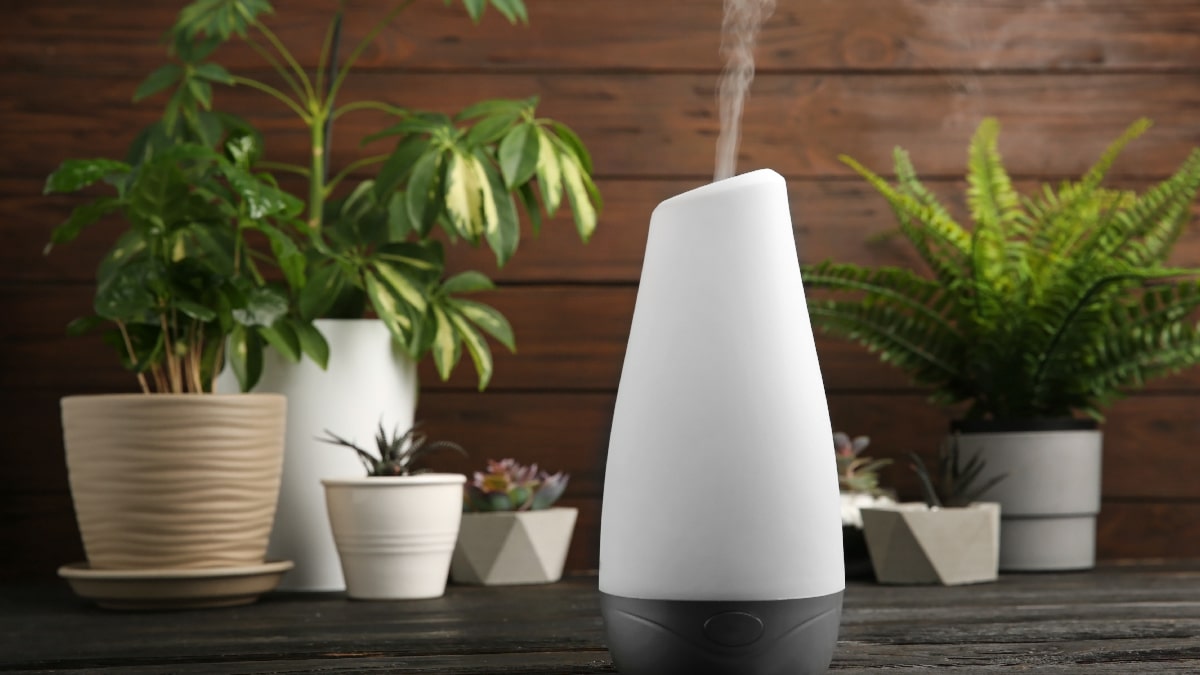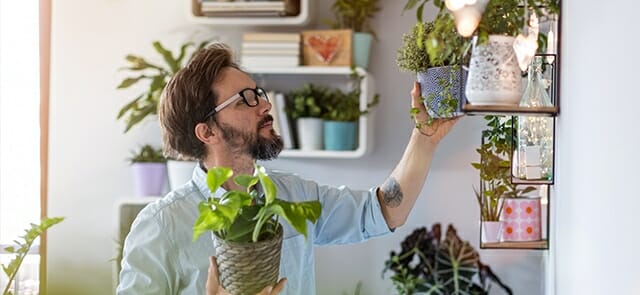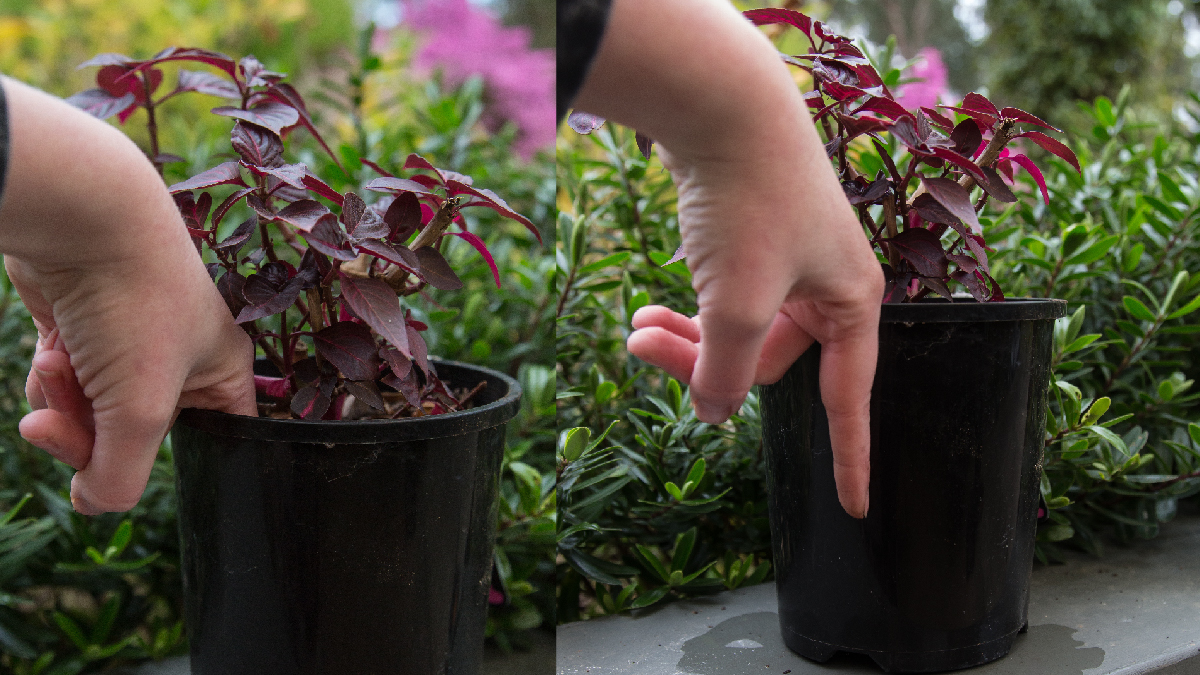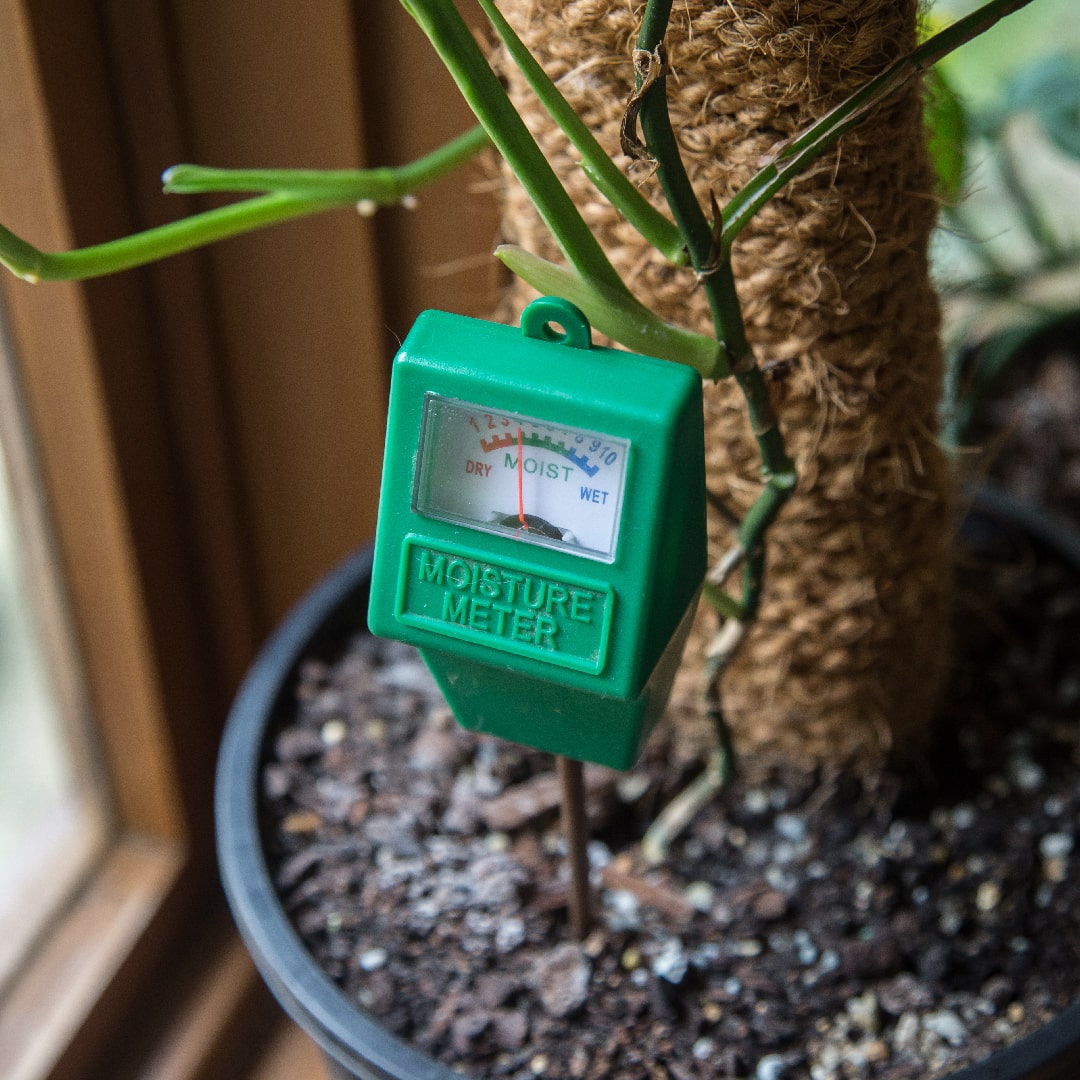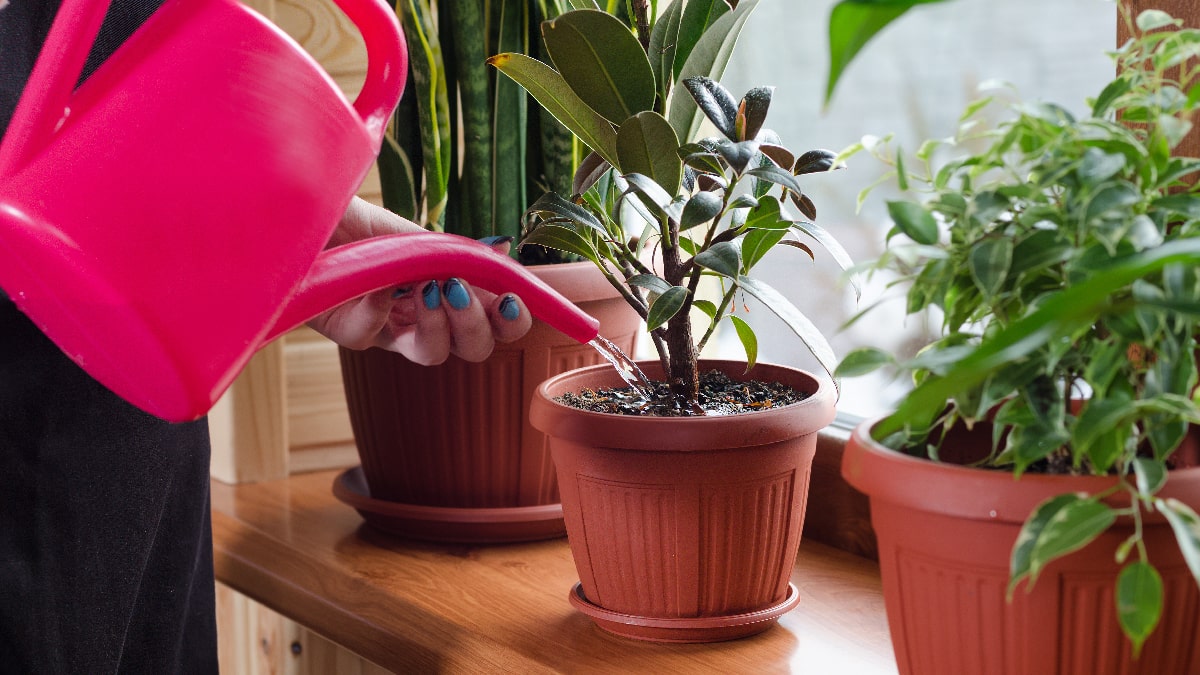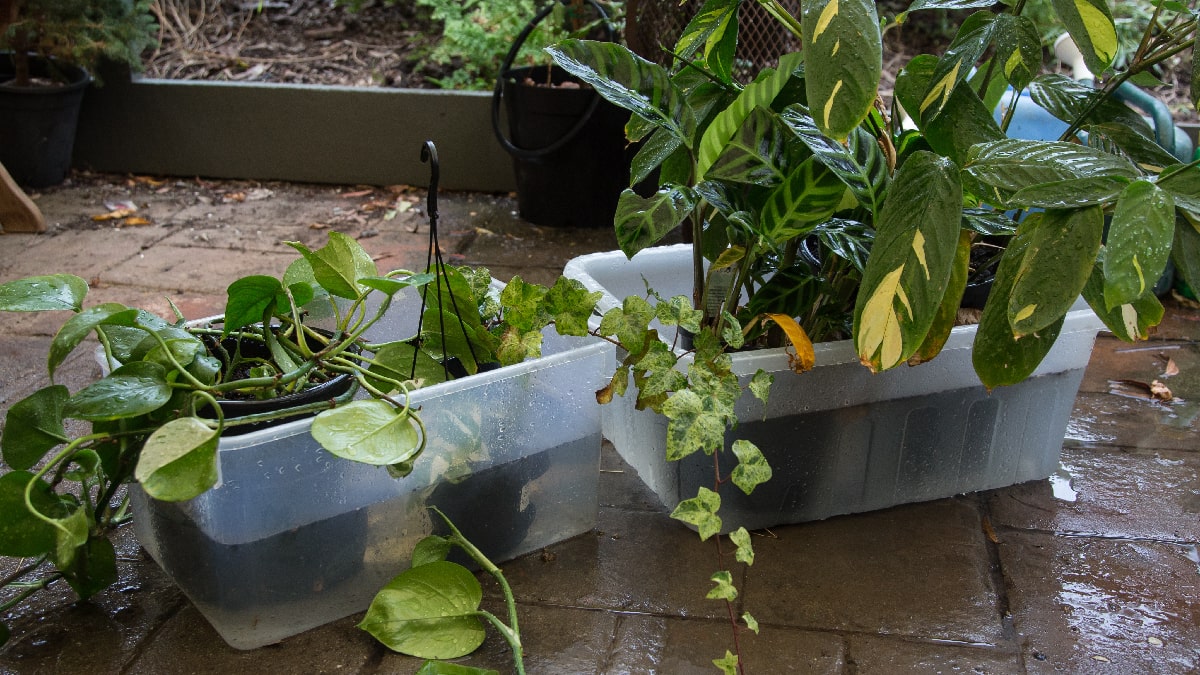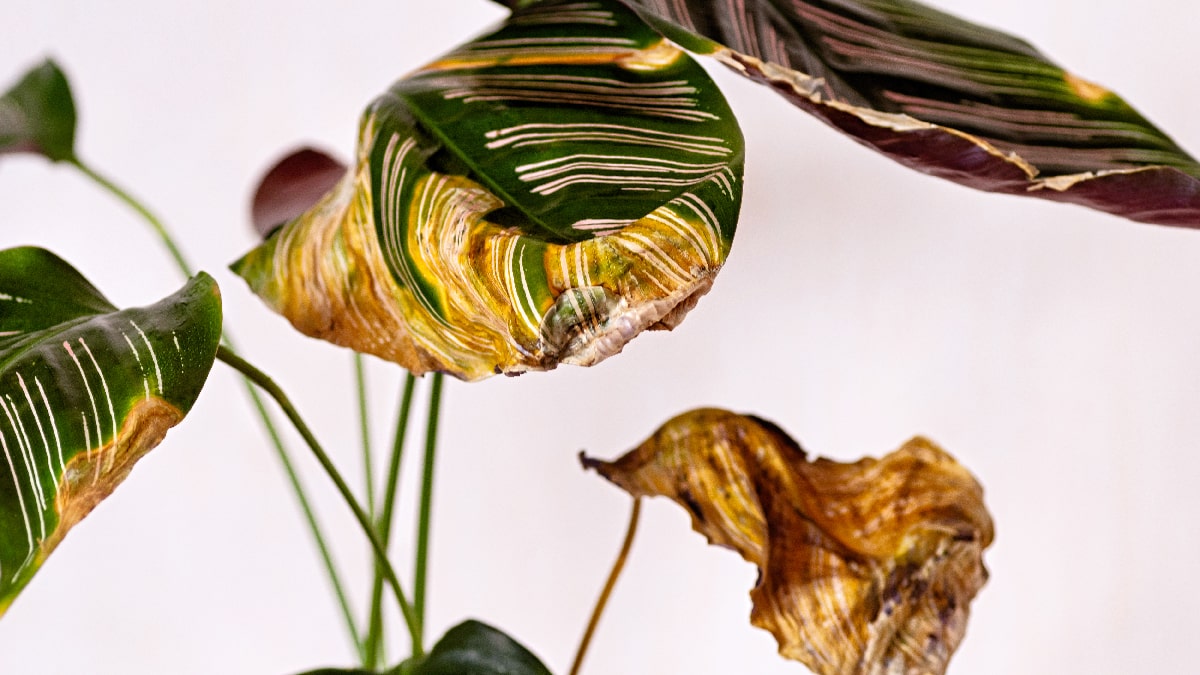In low light conditions, particularly indoors, watering can be tricky to manage. It is best to check your plant’s soil moisture before you water, as the most common cause of death in indoor plants is over watering.
Water can sit at the bottom of the pot drowning the roots, whilst the top of the potting mix is dry. We check the top of the soil with our finger, believing the plant needs a drink and then we go and add more water it does not need!
Some indoor plant varieties like the Zanzibar Gem (ZZ Plant) like to have their soil dry out completely before getting another drink, so check what variety of plant you have and its water needs before watering.
Signs of Overwatering Indoor Plants
You don’t have to wait until your plant is on death’s door before you can tell there is a watering problem. Plants will often give you signs of distress. These signs are often visual with leaves or stems changing colour and position, but there are a few other signs to look out for too.
Smell
Sometimes over watering can get so bad that you can smell an odor coming from the potting mix. This is the organic matter breaking down and rotting due to lack of air, fungi growing and bacteria being produced, creating a pungent smell. In this situation your plant needs to be repotted in fresh potting mix or thrown out. Plants badly infected with disease, fungal infections or dieback will often not revive and can cause harm to other indoor plants in the area. It is best to thrown these out.
Fungus Gnats & Mealybugs
Wilting or Yellowing Leaves
Wilting leaves are a sign of both over and under watering so always check the soil before you try to fix this problem. Over-water wilting often starts from the bottom leaves upward. When the roots begin to drown in too much water, the feeder roots rot off, preventing the plant from feeding and drinking, thus wilting leaves and yellowing leaves. Yellowing leaves are also a sign of a nutrient deficiency so, once again, check the soil moisture first.
Things to consider about your houseplant’s water needs
Environment & Position
Although our indoor plants are indoors, the outside seasons can still affect their growth and moisture. You may live in a house that isn’t well insulated so it is extra hot in summer or extra cold in winter. Or you may have the aircon on a lot or like to keep it extra toasty in winter.
These differences in temperature will have an effect on the evaporation rate of moisture in your indoor plants potting mix and leaves. Plus if it’s extra cold in your house, your plants will slow their growth and therefore not uptake as much nutrients and water.
Position is also important. Plants in dark or low-light conditions will need less water than those in a sunnier position as the water will evaporate more slowly.
Using a Humidifier
With more and more varieties of indoor plants coming on the market, indoor plant enthusiasts are requiring more equipment to keep them looking their best. Humidifiers are the best way to keep the foliage of your indoor plants looking fabulous. This is because many indoor plants are actually tropical species that grow outside naturally in their native warm, humid climates (sooo not Melbourne!)
We can easily create a warm environment by chucking on the heater, but heaters dry out the air. To counter that, purchase a humidifier and place it amongst your indoor plants. They range from $20-$300.
Drainage
Some indoor plants will like a dish of water at their base to gradually wick up water from, but most will want to drain any excess water away from their roots. If you don’t have a strict watering schedule, it is best to make sure your indoor pot plants have good drainage.
Be the only waterer
Can you believe it? This can be something you may be unaware of – you might not be the only person watering your plants in your house. Your housemate or loved one might be trying to help you out and giving your plants a little water here and there to keep them perky. But if you have a strict watering schedule, they could be giving them that extra dose of water that is causing them to almost drown!
Here’s a story from one of our staff illustrating this point:
“I had a Euphorbia spinosa that did not need any water during the winter months and would prefer to dry out during this time. At the time I was living with my mum and unbeknownst to me she would give it a weekly cup of water thinking the potting mix looked a little dry. 3 months later the plant had begun to die back, rotting from the base upward. The whole thing was dead within a month after that. I couldn’t figure out what was wrong with it until mum said ‘It shouldn’t have died, I watered it every week!’” -Eliza, Hello Hello Staff
Your finger!
One of the easiest and cheapest methods. This is for indoor plants in small pots only, as you won’t be able to get deep enough in large pots.
Push your finger down into the soil a full fingers length. You should be at least halfway down the pot. If you’re not, try one of the other methods as you may not reach the true moisture level. If it still feels dry, then your plant may need watering.
Moisture Metre
This is a handy little probe that you can stick into the potting mix of your pots and it will read if there is too much, too little or just the right amount of moisture in the potting mix. The depth it can test is limited to the length of the probe, but will suit most indoor pots except for very large ones.
Light Weight Pot
Simply lift the pot – if you can! This is also not suitable for larger heavy pots like terracotta, concrete or stoneware pots. If the pot feels very light then your plant needs water. If it still has a little weight to it, there is still moisture in the pot. If it is heavy there is ample or possibly too much water in there.
How to Water Your Indoor Plants
There are a few methods of watering your indoor plants and every good indoor gardener has their own methods and routine. Just remember to really pay attention to the signals that your plants babies are giving you and you can’t really go wrong.
Watering Plan & Schedule
Adult life can be hard, and trying to remember every little job you have to do to maintain the household is a lot, let alone your hobbies. So to make life just a little bit easier, plan your plant’s watering needs and create a schedule for yourself.
This doesn’t have to involve a massive amount of work but the more you plan out at the beginning, the less you have to do later. A you can get as detailed as you like! From an alarm on your phone every week to remind you to check the plants all the way to a spreadsheet listing each plant you have and columns for watering & fertilizing dates, amounts given, humidity & temperature readings and any other notes taken (yes, it can get this detailed!)
One of our staff shares their tips:
“I started hoarding indoors during lockdown as a bit of a reaction to missing the outside world. I used to have only one monster plant baby with a fancy self watering pot, but eventually I had over 10 different varieties throughout the house. I’m not a plant expert (I work in accounts) but luckily I’d heard that over-watering was the biggest cause of plant death, especially for indoors, and especially in winter. I found cute little mini wooden plant labels online and wrote myself instructions and stuck them in the soil of each plant: ‘Water me once a month, on the 1st!’ ‘Water me once a week!’ This was helpful because I had someone come to house sit and it was really easy for them to take care of the plants.” -Erica, Hello Hello Staff
Small & Regular
Instead of giving large doses of water, it can be better to to water in smaller amounts and more regularly. This method is to keep the potting mix moist but not soggy. We’re talking 1/2 – 1 cup of water for a 8″/20cm pot on a weekly basis in summer, fortnightly in winter.
Soak
This method involves submerging your pot plants in water for a period of time from 1 minute to 10 minutes to ensure the potting mix is soaked through. This can be done in a bathtub, sink or in big tubs in the backyard. I tend to do them in the backyard where a hose is available so I can spray the leaves, cleaning off any dust, bugs and grime that may have accumulated, and giving the plants a full refresh. One of our staff who lives in an apartment pops them in the bathtub and rinses off their leaves with the shower head at the same time. Adding Seasol to the water they’re soaked in also gives the plants a good boost.
Yep, these are an almost fool proof way to water most (but not all) indoor plants! These pots hold a reserve of water in a dish under the main pot. A few points of contact in the form of little funnels or tubes poke up into the potting mix from the tray of reserve water. This enables the water to wick its way up slowly into the potting mix without it getting soaked or submerged.
Although this is a wonderful way to maintain a good moisture level in your indoor plant’s soil, you do have to remember to fill the reserve tray. It is easy to forget, and you may think your plant is happily slurping up water at its own leisure but is actually bone dry! This commonly happens for plants kept in high places like on top of bookcases and shelves, where the air is warmer and drier and, therefore, the water will dry up faster. So remember that a self watering pot is not a totally “set and forget” solution.
Now that you know how to water indoor plants, maybe you realise you’ve been doing it right all along and this is not your actual problem. Check out our other advice pages such as the differences between Potting Mix or Soil or more on Plant Pests, Diseases and Deficiencies





